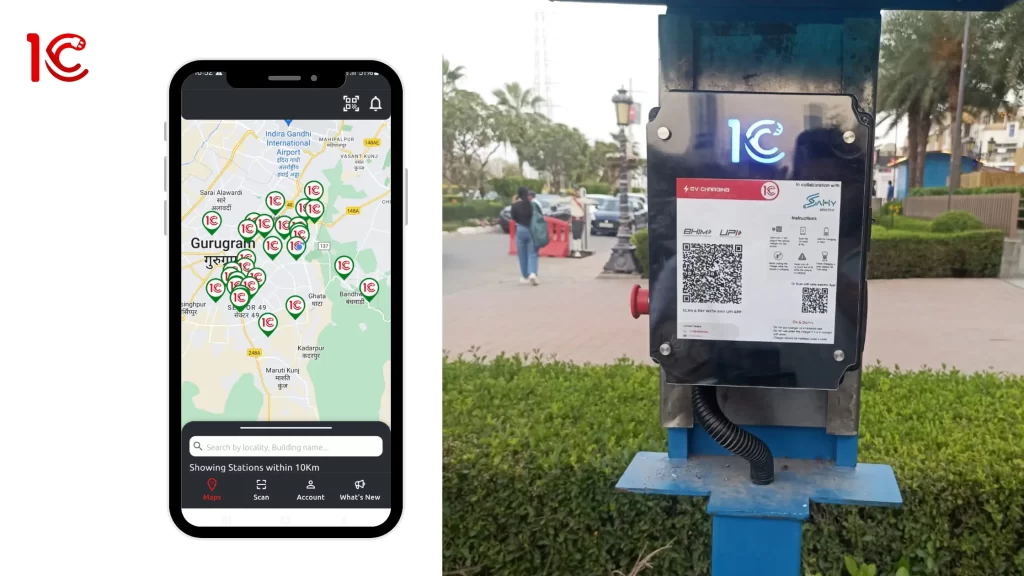Menu
Menu

It is software that lets you control multiple charging stations from an internet-connected device, such as a phone, tablet, laptop, PC, etc. It is similar to managing various security cameras from a single seat.

Now, along with a sneak peek at the chargers, a CMS can do much more, such as load balancing, dynamic pricing, load calculation, energy consumption, etc. The only difference between a good and a poor CMS is data accuracy and information speed (a good UX and elegant design are also essential factors).
As the EV market grows and has immense future potential, many companies and startups are working on building the supporting infrastructure. However, in the rush of maximum market capitalisation, many companies aren’t focusing on creating a long-term and robust infrastructure. Unlike the crowd, 1Ctm has a long-term vision. This blog post’ll examine why 1C CMS can brighten your EV charging station and take your business to the next level.

A simple answer to this question is, “To save it from blowing up into ashes.” Let’s understand the need for the CMS from a real live example:
“You’re setting up a charging station where you’ve installed 10 different EV chargers: 6 AC slow chargers and 4 DC fast chargers. Now, due to price constraints or other reasons, all your chargers are from various companies, and the default CMS that came with those chargers will also be different. So, let’s say your charging station has 4 different companies, and to manage that charging station, you’ll need 4 different apps/portals. Since the chargers are not interconnected, load balancing will become a significant issue.”
To solve this problem, you need a Charging Management System, i.e. CMS.
What if one doesn’t use a single umbrella CMS? Now, let’s understand this issue using another example.
“In the above example, if the user doesn’t use a single umbrella CMS, he/she will have to maintain the whole charging station from different apps, which may incur losses. Since each EV Charger uses a different CMS, the interconnectivity factor will be zero, and the lack of load balancing can blow up the whole charging station.”
Now that you know why a charging station needs a CMS, let’s understand how it works.

An Electric Vehicle (EV) Charging CMS (Charging Management System) typically functions as a centralised platform that oversees various aspects of EV charging infrastructure. Here’s a breakdown of how it works:

Let’s start with the critical infrastructure issue of charging stations, i.e., “unparallel payment gateways.” Today, if you go to a charging station to charge your EV, the first step you need to take is to download the app, then fill your wallet with money, and only you can start charging the EV. This process is time-consuming and takes up plenty of extra cash. 1C is solving the issue of an unparalleled payment gateway in India.
1CTM has a UPI-based payment gateway wherein a user can make the UPI payment and start charging. This solves a significant issue with India’s charging station infrastructure.
Every charger that uses 1C CMS will have this feature.
Apart from UPI-based charging, some other benefits are as follows:
Such features give the 1C EV Charging a significant foundation to raise above and ease the adoption in India.

A Charging Management System (CMS) is crucial for efficiently operating an EV charging station. It simplifies managing multiple chargers from various manufacturers, resolves load-balancing issues, and offers valuable features like user authentication, billing, and data analytics. 1C CMS stands out with its UPI-based payment gateway, eliminating the need for multiple apps and simplifying the charging experience for users in India.
Additionally, real-time monitoring, dynamic tariff management, and a user-friendly interface make 1C CMS a compelling solution for EV charging station owners and operators. By adopting a robust CMS like 1C, businesses can ensure smooth operation, attract more customers, and contribute to the broader adoption of electric vehicles in India.
© 2024 Massive Mobility Private Limited. All rights Reserved